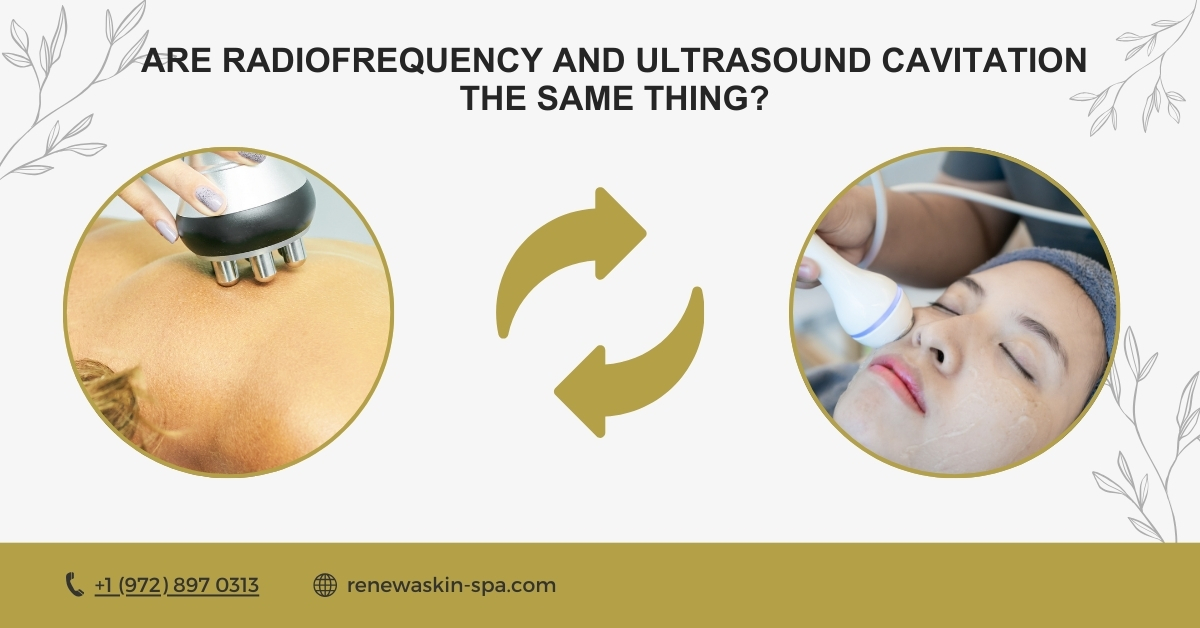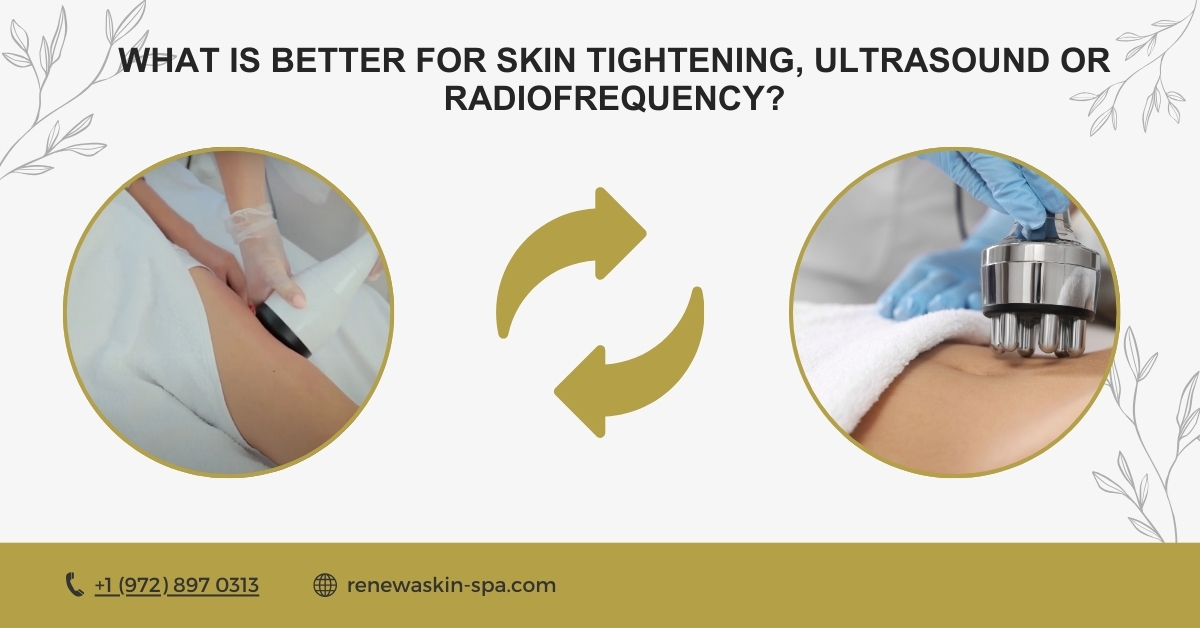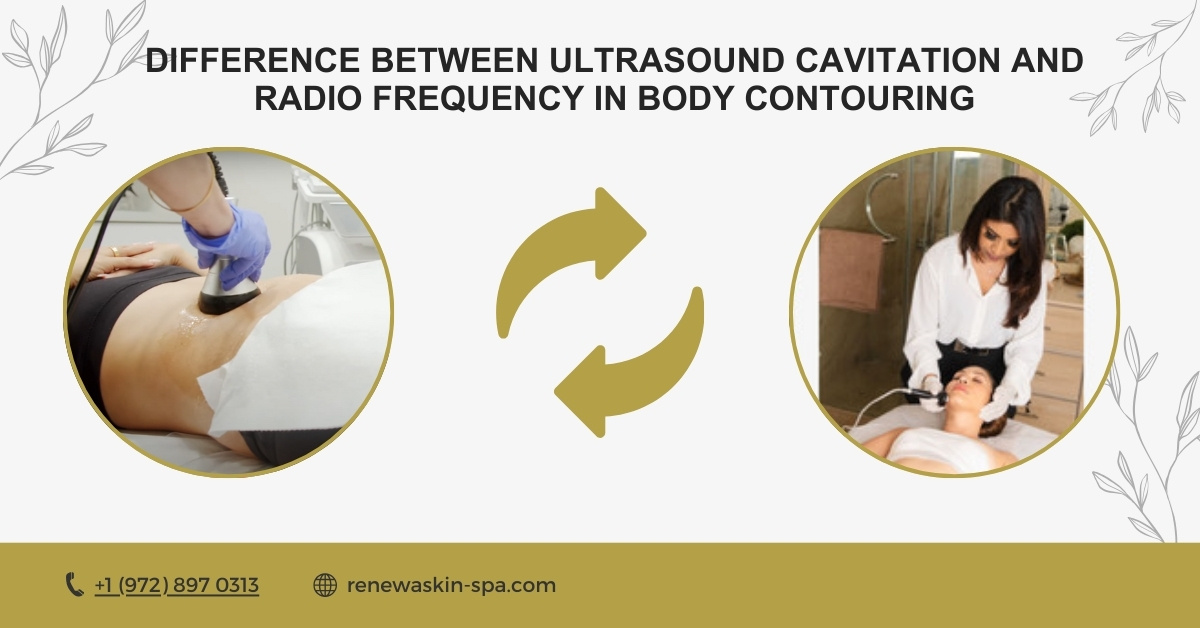In the realm of body contouring, two popular non-surgical treatments, ultrasound cavitation and radio frequency (RF), have emerged as effective options for individuals seeking to enhance their body aesthetics. Each of these technologies offers unique benefits and mechanisms of action, making it essential to understand their differences to make an informed decision.
This article delves into the definitions and functionalities of both ultrasound cavitation and radiofrequency treatments, examining how they contribute to fat reduction, skin tightening, and overall contouring effects.
What is Ultrasound Cavitation and RF?
Ultrasound cavitation is a body contouring technique that utilizes low-frequency sound waves to target fat cells below the skin’s surface. This treatment causes a rapid pressure change in the fat cells, leading to their disruption and subsequent elimination from the body.
On the other hand, radio frequency technology employs high-frequency electrical currents that penetrate the layers of the skin, generating heat to stimulate collagen production. This process facilitates skin tightening and cellulite reduction. Both ultrasound cavitation and RF have gained popularity among London’s cellulite experts for their effective treatment range for the contouring of the face and body.
What is Radiofrequency Treatment?

Radiofrequency treatment is a non-surgical procedure that utilizes advanced radio frequency technology to improve skin texture and elasticity. By delivering high-frequency electrical currents to the skin, RF heats the underlying tissues, promoting collagen remodeling and tightening the skin. This technique is particularly effective for individuals looking to address signs of aging, such as sagging skin and fine lines.
Additionally, RF can be used in conjunction with ultrasound cavitation to enhance overall body contouring outcomes. While many enthusiasts promote these treatments, it’s essential to remember that not all treatments guarantee 100% success; studies suggest that only about 1% of treatments yield optimal results.
What is Cavitation Treatment?
Cavitation treatment, specifically ultrasound cavitation, is a non-surgical body contouring technique that employs low-frequency sound waves to target and disrupt fat cells located below the skin’s surface. The process involves generating rapid pressure changes within these fat cells, which results in their breakdown and eventual elimination by the body’s natural processes. This innovative treatment is celebrated for its ability to sculpt areas such as the abdomen, thighs, and arms without the need for invasive procedures.
Moreover, ultrasound cavitation not only aids in fat reduction but can also contribute to skin tightening and cellulite reduction. As a result, it has become one of the preferred choices for individuals seeking effective body contouring solutions. Many of London’s cellulite experts advocate for cavitation treatment due to its ability to deliver noticeable results while minimizing downtime, making it a convenient option for busy lifestyles.
Are Radiofrequency and Ultrasound Cavitation the Same Thing?

While both radiofrequency (RF) and ultrasound cavitation are popular non-surgical body contouring treatments, they utilize different technologies and serve distinct purposes. Radiofrequency technology employs high-frequency electrical currents that penetrate the layers of the skin, generating heat to stimulate collagen production and enhance skin elasticity.
This method is particularly effective for skin tightening and reducing the appearance of cellulite. In contrast, ultrasound cavitation focuses on breaking down fat cells through low-frequency sound waves, targeting fat deposits beneath the skin’s surface.
Although these two types of treatments can complement each other—often used in synergy to enhance overall results—they are not interchangeable. Radiofrequency and cavitation are distinct procedures in cosmetic treatments.
The difference between ultrasound and ultrasonic cavitation lies in their mechanisms. Radiofrequency uses heat to stimulate collagen, while cavitation uses ultrasonic waves to target fat cells. Despite their differences, both aim to enhance skin and body contouring effectively.
So Does Cavitation Work? Does Radiofrequency Work?
When considering the effectiveness of ultrasound cavitation and radiofrequency treatments, it is essential to understand their distinct mechanisms and the results they can achieve. Ultrasound cavitation works by employing low-frequency sound waves that create rapid pressure changes within fat cells below the skin’s surface. This process disrupts the fat cells, allowing the body to naturally eliminate them over time.
Many users report visible reductions in localized fat deposits, making it a favored option among those seeking effective body contouring. So, does cavitation work? Yes, but its effectiveness can vary. Many people wonder, how often can you do ultrasound cavitation? Typically, it’s recommended to undergo treatments weekly or bi-weekly for optimal results.
Meanwhile, radiofrequency technology utilizes high-frequency electrical currents to heat the deeper layers of the skin, stimulating collagen production and promoting skin tightening and cellulite reduction. While both methods can yield positive results, the effectiveness of each treatment often varies depending on individual factors such as skin type, treatment area, and personal health conditions.
Therefore, practical consultations with qualified professionals are crucial to tailoring treatments to suit individual needs and expectations, as neither method can guarantee 100% success in all cases.
What is Better for Skin Tightening, Ultrasound or Radiofrequency?

When evaluating which treatment is superior for skin tightening, ultrasound cavitation and radiofrequency both have their unique advantages. Radiofrequency stands out as the more effective option for skin tightening because it directly targets the skin’s deeper layers, promoting collagen remodeling and enhancing elasticity. This high-frequency electrical current penetrates the skin, generating heat that stimulates the production of new collagen fibers, resulting in firmer, tighter skin.
On the other hand, while ultrasound cavitation can assist in skin tightening, its primary function is to reduce fat cells beneath the skin’s surface. As such, those seeking significant improvement in skin laxity may benefit more from radiofrequency treatments.
However, combining the two types of treatments can yield comprehensive results, addressing both fat reduction and skin tightening simultaneously. Ultimately, the choice depends on individual goals and conditions, emphasizing the importance of consulting with London’s cellulite experts to identify the best approach for achieving desired outcomes.
What is Better for Cellulite, Ultrasound or Radiofrequency?
In the battle against cellulite, both ultrasound cavitation and radiofrequency treatments offer distinct benefits, yet radiofrequency technology has emerged as the more effective choice for reducing the appearance of cellulite.
Radiofrequency works by increasing blood circulation and heating the skin’s deeper layers, which helps to break down the fibrous bands that contribute to the dimpled appearance of cellulite. This method also stimulates collagen production, enhancing skin thickness and elasticity, which can further reduce the visibility of cellulite. Ultrasound cavitation, while effective in targeting fat cells below the skin’s surface, does not directly address the fibrous bands associated with cellulite.
Instead, it primarily focuses on fat reduction in localized areas. However, both treatment options can complement each other when used in a combined approach, offering a comprehensive treatment range for cellulite and body contouring. To effectively tackle cellulite concerns, it is advisable to consult with experts who can tailor a treatment plan that maximizes the benefits of both ultrasound cavitation and radiofrequency technologies.


